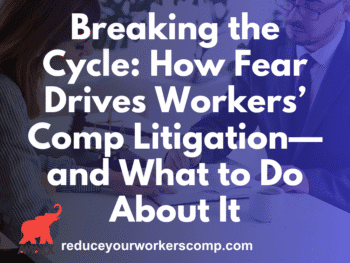Tom Robinson, J.D., a legal expert from Lexis Nexis, reported on a case in which the exclusivity defense did not prevent the employee from filing a negligence action against the employer. Two workers were employed as film inspectors on the overnight shift. One of them, Streng, was suspended for three days without pay because the other worker, Duffy, repeated to various others Streng’s excuse for returning late from a meal break: Streng had fallen asleep in his car.
Streng allegedly told Duffy he was going to “get” him. Streng asked for and received a transfer, but several weeks later, the two again encountered one another in a courtyard outside the office and Streng allegedly renewed his threat, saying, “I know where you live.” Faced with conflicting stories about the altercation, a supervisor sent both workers home for the day. Streng was held by security personnel until Duffy left the premises. Nonetheless, Streng arrived at Duffy’s house first and assaulted him.
Duffy filed a tort claim against the employer and others, contending it was liable for the physical injuries and other damages he had sustained. The employer contended that the tort action was barred by the exclusive remedy provisions of the state’s workers’ compensation law. In Duffy v. Technicolor Entertainment Servs., Inc., 2009 Cal. App. Unpub. LEXIS 837 (January 29, 2009), a California appellate court, in an unpublished decision, refused to throw out the tort case on exclusivity grounds, found unconvincing the employer’s argument that Duffy’s injuries grew out of a workplace dispute, and determined instead that there were issues of fact as to the employer’s negligent retention of Streng.
According to the court, reasonable people could infer from Streng’s prior conduct that he might be a real, present, and apparent threat of harm to Duffy and others. The negligence claims were appropriately left for the jury. The court, therefore, let stand a $1 million verdict in the case. See Larson’s Workers’ Compensation Law, Ch. 103, § 103.07 for more information or go to LexisNexis Workers’ Compensation Law Center. This entry was written for Workers’ Comp Kit Blog, and we appreciate the helpful insight this brings to our readers.
Tom Robinson, J.D. is the primary upkeep writer for Larson’s Workers’ Compensation Law (LexisNexis) and Larson’s Workers’ Compensation, Desk Edition(LexisNexis). He is a contributing writer for California Compensation Cases(LexisNexis) and Benefits Review Board – Longshore Reporter (LexisNexis), and is a contributing author to New York Workers’ Compensation Handbook(LexisNexis). Attorney Robinson is an authority in the area of workers’ compensation and we are happy to have him as a Guest Contributor. Tom can be reached at: compwriter@gmail.com.
Do not use this information without independent verification. All state laws are different. Consult with your corporate legal counsel before implementing any cost containment programs. ©2008 Amaxx Risk Solutions, Inc. All rights reserved under International Copyright Law. If you would like permission to reprint this material, contact us.
















